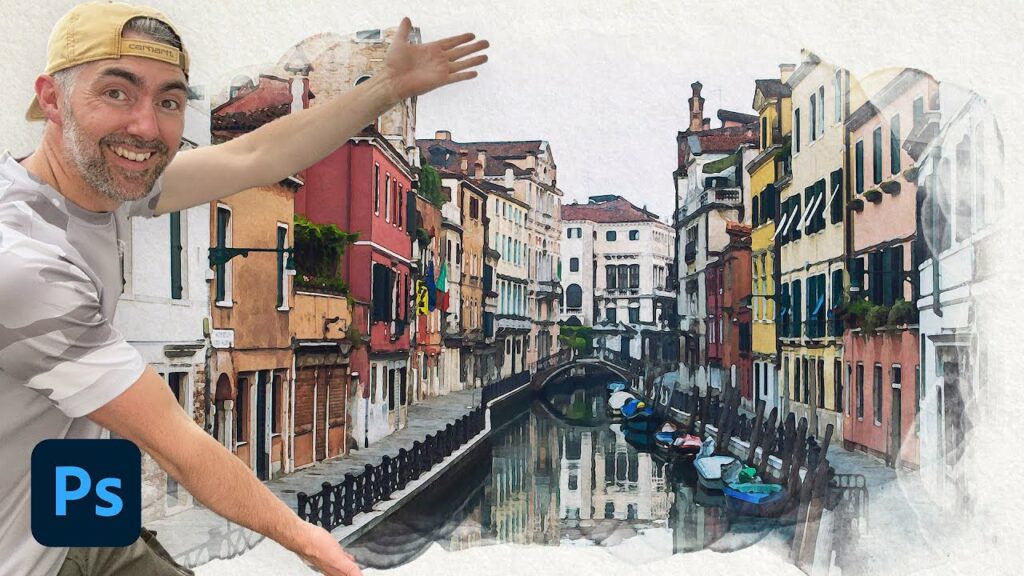Mastering the Art of Digital Watercolors: A Comprehensive Guide to Creating a Watercolor Painting Effect in Photoshop

Introduction:
The allure of watercolor paintings lies in their ethereal, vibrant, and often unpredictable nature. Translating this traditional artistic medium into the digital realm opens up a world of creative possibilities. Adobe Photoshop, with its extensive toolkit, allows artists and designers to recreate the captivating charm of watercolor effortlessly. In this comprehensive guide, we will embark on a detailed journey through the step-by-step process of creating a watercolor painting effect in Photoshop. From selecting the right image to mastering brush techniques, this guide will empower you to infuse your digital creations with the whimsy and beauty of watercolor.
I. Understanding the Essence of Watercolor:
1.1 The Unique Appeal of Watercolors:
- Watercolor paintings are celebrated for their translucent washes, soft edges, and fluid blending of colors.
- Digital watercolor effects seek to capture the organic and expressive qualities of traditional watercolor artworks.
1.2 Digital Replication in Photoshop:
- Adobe Photoshop provides a versatile platform for replicating the organic flow and delicate textures characteristic of watercolor paintings.
- This guide will explore various tools and techniques to emulate the spontaneous and artistic qualities of watercolor.
II. Choosing the Right Image:
2.1 Image Selection Criteria:
- Begin with an image that complements the characteristics of watercolor, such as landscapes, portraits, or images with distinct shapes and details.
- Consider the composition and color palette to ensure compatibility with the watercolor treatment.
2.2 Evaluating Image Resolution:
- Choose high-resolution images to maintain detail and clarity, especially if you plan to use the final artwork for print or larger displays.
- Higher resolution allows for greater flexibility and precision during the digital watercolor process.
III. Setting Up the Canvas:
3.1 Creating a New Document:
- Open Photoshop and create a new document with dimensions suitable for your project. Ensure a high resolution for optimal detail.
- Consider the intended use (web, print) and set the color mode to RGB or CMYK accordingly.
3.2 Importing the Image:
- Import the selected image into the Photoshop document as a new layer.
- Resize and position the image as needed, keeping in mind the overall composition.
IV. Preparing the Image for Watercolor Treatment:
4.1 Desaturation and Adjustment Layers:
- Desaturate the image to remove color information temporarily.
- Add adjustment layers such as Levels or Curves to enhance contrast and tonal range.
- These adjustments create a solid foundation for the subsequent watercolor effects.
4.2 Duplicate Layers for Flexibility:
- Duplicate the image layer and apply the watercolor effect to the duplicate.
- This approach preserves the original image for reference and comparison during the creative process.
V. Utilizing Photoshop Brushes for Watercolor Effects:
5.1 Selecting Watercolor Brushes:
- Photoshop offers a variety of brushes that mimic the characteristics of watercolor, including soft edges, blending, and expressive strokes.
- Experiment with default brushes or explore additional brush sets available online for a diverse range of watercolor textures.
5.2 Brush Settings for Realism:
- Adjust brush settings such as Opacity, Flow, and Smoothing to control the brushstroke intensity and fluidity.
- Experiment with different brush sizes for various details and coverage.
VI. Applying the Watercolor Effect:
6.1 Brushing with Watercolor Textures:
- Start applying the watercolor effect by using the selected brushes with gentle strokes.
- Embrace the unpredictability of watercolor by allowing colors to blend and bleed into each other.
6.2 Layering and Building Depth:
- Work in layers to build depth and complexity. Use different brushes and colors on separate layers, adjusting opacity to create subtle overlays.
- Layering contributes to the richness and authenticity of the watercolor effect.
VII. Adding Splatters and Texture:
7.1 Creating Splatter Effects:
- Introduce splatter effects to emulate the spontaneity of traditional watercolor paintings.
- Use a textured brush or a splatter brush to add controlled splatters to specific areas.
7.2 Texture Overlay Techniques:
- Overlay textures, such as paper or canvas textures, to mimic the physicality of watercolor paper.
- Adjust the blending mode and opacity of the texture layer for a seamless integration.
VIII. Adjusting Color Saturation and Vibrancy:
8.1 Enhancing Color Saturation:
- Gradually reintroduce color saturation to the watercolor layers using adjustment layers.
- Adjust Vibrance and Hue/Saturation settings to achieve a balanced and visually appealing color palette.
8.2 Mimicking Watercolor Staining:
- Experiment with additional adjustment layers to simulate watercolor staining and variations in color intensity.
- Mimic the way watercolor pigments saturate certain areas more than others for an authentic look.
IX. Finalizing and Refining:
9.1 Iterative Review:
- Step back and review the overall watercolor effect applied to the image.
- Make iterative adjustments, refining details and addressing any areas that may require additional attention.
9.2 Saving the Final Artwork:
- Save the final watercolor artwork in the desired format, considering the intended use (web, print, etc.).
- Preserve layers for future edits and experimentation.
X. Conclusion:
Creating a watercolor painting effect in Adobe Photoshop is a journey of artistic exploration, where the digital canvas becomes a playground for creativity and expression. By understanding the nuances of watercolor techniques, leveraging Photoshop brushes, and embracing the spontaneity of the medium, artists can bring their digital images to life with the timeless charm of watercolor. As you embark on your watercolor journey, let intuition guide your strokes, experiment with various brushes, and watch as your digital canvas transforms into a vibrant, expressive masterpiece that pays homage to the age-old artistry of watercolor paintings.







